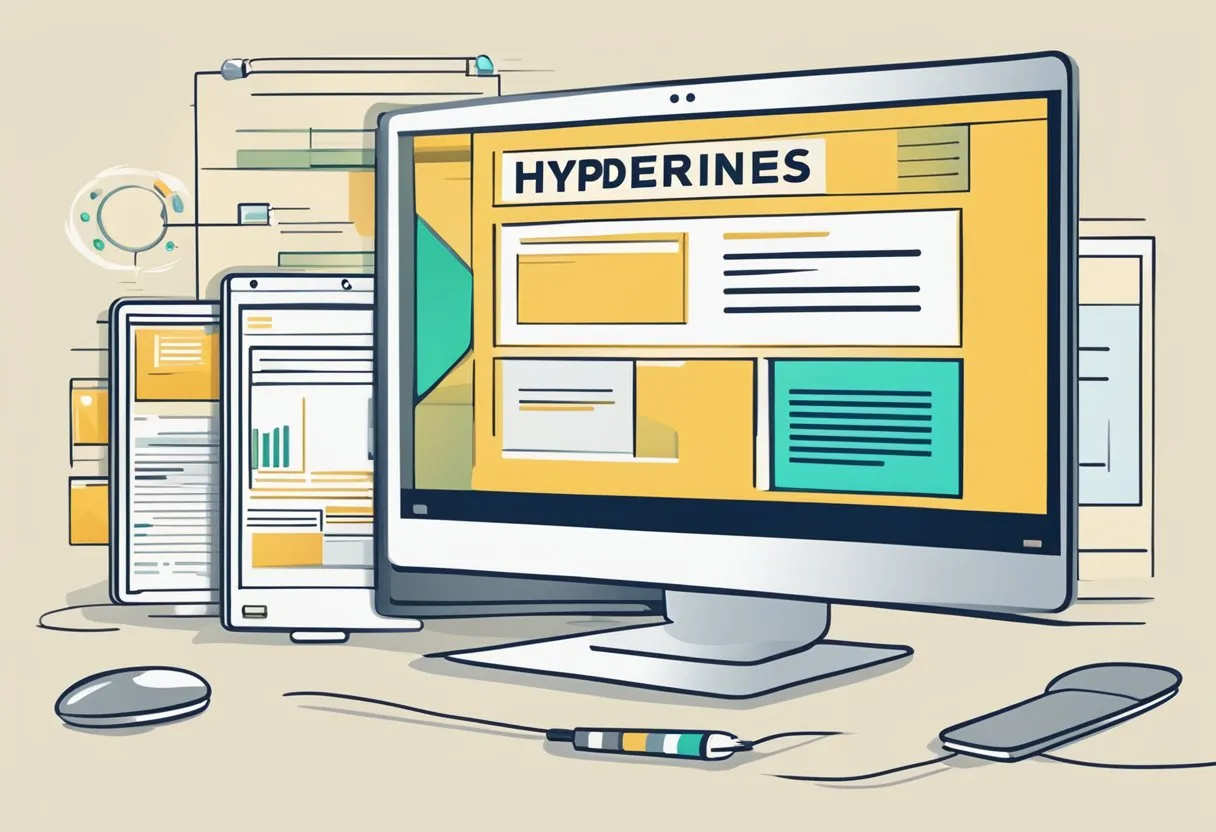How to Cloak a Link: A Step-by-Step Guide for Beginners
Efficiently managing your affiliate links is crucial for successful online marketing. Many marketers turn to link cloaking as a technique to not only tidy up long URLs but also to protect their affiliate identification and improve click-through rates. Link cloaking disguises the destination URL by redirecting it through a more user-friendly version, enhancing the user experience and increasing trust.

For those unfamiliar, link cloaking, also known as URL masking,
Understanding Link Cloaking

Link cloaking involves creating a shorter, more attractive URL that redirects to the original link. This technique is essential for affiliate marketing, as it hides the affiliate ID and helps protect commissions. Ethical practices are crucial to maintain trust with your audience.
The Basics of Link Cloaking
Link cloaking is a method used to disguise the true destination of a hyperlink. The process involves generating a new URL that redirects to the original link, often using a 301 redirect.
For instance, instead of displaying a lengthy affiliate link, a cloaked link like www.example.com/recommendation is used. This not only makes the link more user-friendly but also hides the affiliate tracking ID, preventing commission theft. Tools like Pretty Links facilitate this process by providing a simple interface to shorten and cloak affiliate links.
Importance in Affiliate Marketing
Affiliate marketers benefit significantly from link cloaking. The technique helps in protecting their earnings by hiding the affiliate ID embedded in the link. This prevents others from altering the URL and stealing potential commissions.
A well-cloaked link also looks more professional and appealing, encouraging clicks. For instance, a visitor is more likely to click on www.example.com/offer rather than a lengthy URL filled with tracking parameters. This practice fosters trustworthiness, as users perceive the links to be more legitimate and secure.
Ethical Considerations and Trustworthiness
While link cloaking offers several benefits, it raises ethical concerns. Transparency is key to maintaining trust with your audience. Misleading users with cloaked links that redirect them to unexpected content can damage credibility.
It’s important for affiliate marketers to ensure that their cloaked links lead to relevant and honest destinations. Clearly indicating affiliate relationships can preserve trust and build a loyal audience. Using link cloaking responsibly ensures that marketing remains trustworthy and effective.
Under the right circumstances, link cloaking can enhance the user experience and protect affiliates’ interests while maintaining ethical standards and fostering trust.
Technical Aspects of Cloaking Links
There are various methods to cloak links, including manual approaches and automated plugins. Each method has different requirements and advantages, whether you’re writing code or using a plugin.
Different Methods of Cloaking
Cloaking links can be accomplished using several techniques. One common method involves URL redirect, where the destination URL is masked behind a more user-friendly link. Another approach uses a PHP script within a file like index.php to handle the redirection process.
Automated plugins are popular in content management systems like WordPress. These plugins streamline the process, offering features that help manage and monitor affiliate links efficiently. Properly cloaked links improve link management while maintaining the affiliate ID invisible to the user.
Creating a Cloaked Link Manually
To cloak a link manually, you often use PHP scripts. You can create a basic script in your index.php file that will redirect users to the desired URL.
Example of a PHP script:
<?php
header('Location: http://example.com/your-affiliate-link');
exit();
?>Save this script as a PHP file on your server, then use the URL to this PHP file as your cloaked link. This method provides full control over your links and can customize the redirection process, but it requires coding knowledge.
Using a Plugin for Automated Cloaking
Plugins offer a user-friendly solution for those who prefer not to handle coding. WordPress users might find tools like Pretty Links very useful for link cloaking. These plugins automate the creation of cloaked links and often include additional features such as click tracking and link management.
To use a plugin:
- Install the chosen plugin (e.g., Pretty Links).
- Configure basic settings like the base URL for cloaked links.
- Create and manage links directly from the plugin interface.
Automating the process saves time and ensures links are consistently formatted. This improves tracking and analysis of link performance, crucial for thriving in affiliate marketing.
Choosing the Right Tools
Selecting the appropriate tools is essential for effective link cloaking, ensuring reliability and ease of use. Factors such as compatibility, features, and reputation should guide your decision.
WordPress Plugins for Link Cloaking
WordPress users have multiple plugins available for link cloaking. Popular options include ThirstyAffiliates, Easy Affiliate Links, and Yoast. These plugins offer straightforward installation and user-friendly interfaces. ThirstyAffiliates provides robust reporting tools to track link performance. Easy Affiliate Links focuses on simplicity and quick link creation. Meanwhile, Yoast, primarily known for SEO, also supports link cloaking effectively. Each plugin integrates seamlessly with WordPress, making it simple for even beginners to manage cloaked affiliate URLs without extensive technical knowledge.
Features to Look for in Cloaking Tools
When choosing a link cloaking tool, consider features such as link management, tracking and reporting, and SEO optimization. Look for tools that offer automatic link insertion, allowing links to be added to your content effortlessly. Comprehensive reporting capabilities enable you to analyze click-through rates and conversion metrics. Ensure the tool supports HTTPS to maintain secure links. Advanced features might include A/B testing, which helps determine the effectiveness of different cloaked URLs. Additionally, the tool should not interfere with tracking codes or affiliate parameters, ensuring accurate commission tracking.
Recommended Cloaking Plugins
Several plugins are widely recommended for their reliability and feature sets. ThirstyAffiliates is highly regarded for its detailed tracking and easy link creation process. Easy Affiliate Links is lauded for its user-friendly interface, making it ideal for beginners. Yoast offers substantial SEO benefits alongside link cloaking features, making it a dual-purpose tool for website optimization. These plugins are consistently updated and supported, ensuring they evolve with changing affiliate marketing requirements. Evaluating each based on these aspects will help you find a tool that fits your specific needs and enhances your affiliate marketing strategy effectively.
Implementing Link Cloaking
Implementing link cloaking involves following best practices to enhance efficiency and secure commissions. It includes a detailed process to cloak a link and proper maintenance to ensure continued efficacy and tracking.
Link Cloaking Best Practices
To maximize the effectiveness of link cloaking, follow best practices rigorously. Use 301 redirects for permanent links to help with SEO and 302 redirects for temporary links. This ensures that search engines understand the redirect type correctly, aiding in link performance.
Always use a meaningful and relevant slug that reflects the content or purpose of the link. This makes links more appealing and trustworthy to users. Protect against commission theft by concealing the affiliate ID.
Ensure you are compliant with platform policies and legal requirements. Regularly monitor your cloaked links for broken redirects or performance issues. Utilize analytical tools to track click data, which helps in assessing the effectiveness of cloaked links.
Step-by-Step Guide to Cloaking a Link
- Prep Your Affiliate Link: Start by obtaining the affiliate link you wish to cloak.
- Create a New URL: Use a link management tool to generate a new URL that will act as the cloak. Tools like Pretty Links or Lasso are useful.
- Set Up the Redirect: Configure the new URL to redirect to the affiliate link. This typically involves adding it to a redirects.txt file or setting up a redirect in your link management tool. The format usually includes the destination URL and the link slug.
- Publish: Once the redirect is set up, publish the new cloaked link on your website or marketing material.
- Promote: Share your cloaked link through various channels while monitoring its performance to ensure it is working correctly.
Maintaining and Updating Cloaked Links
Regular maintenance of cloaked links is crucial. Check links periodically to ensure they are not broken and redirects are functioning as intended.
Use analytical tools to monitor link performance consistently. This includes tracking click data to see how well your links are performing and making adjustments as needed.
If the destination URL changes, promptly update the redirect in your management tool. This keeps your cloaked links current and valid, maintaining their effectiveness and preventing any drop in conversions.
Re-evaluate the slugs used and adjust them to be more relevant if needed, based on tracking and performance data. This continuous improvement cycle helps in keeping your affiliate marketing strategy robust.
SEO Considerations
When cloaking links, adhering to search engine guidelines is crucial for maintaining visibility and avoiding penalties. This section covers the relationship between link cloaking and search engine guidelines, its impact on SEO and click-through rates, and considerations for using the nofollow attribute.
Link Cloaking and Search Engine Guidelines
Search engine guidelines, particularly from Google, emphasize transparency and discourage deceptive practices. Link cloaking can be seen as gaming the system if not done appropriately. It’s essential to ensure that cloaked links do not hide or misrepresent content. Misuse of cloaking can lead to penalties or deindexing from search results.
Utilize robots.txt, X-Robots-Tag, and detailed meta tags to inform search engines about the nature of your links. This helps maintain compliance and prevents accidental penalties.
Impact on SEO and Click-Through Rates
Cloaked links often appear cleaner and more professional, which can positively affect click-through rates (CTR). A higher CTR can signal relevance to search engines, potentially boosting SEO metrics. Therefore, well-executed link cloaking can indirectly enhance SEO performance.
Keep in mind that the core content behind the cloaked link must be valuable and relevant. This ensures user satisfaction and maintains the trust of search engines, like Google and Bing.
Using Nofollow with Cloaked Links
The nofollow attribute is critical when dealing with affiliate or promotional links. Adding rel="nofollow" signals to search engines that they should not pass PageRank through these links, which helps prevent potential issues related to link schemes.
Implementing nofollow correctly is essential to maintain a good standing with search engines. Place the nofollow tag appropriately in your cloaked links to ensure compliance and to prevent any negative impact on your site’s ranking.
Analytics and Performance Tracking
Effective analytics and performance tracking are key components of successful link cloaking. By setting up robust tracking systems, interpreting the data you gather, and making data-driven decisions, you can optimize your affiliate marketing efforts.
Setting Up Analytics for Cloaked Links
To begin, integrate a tool like Google Analytics to monitor your cloaked links. This involves creating tracking codes for each affiliate link. Tools like ClickWhale offer dashboards to keep an eye on your link performance.
In Google Analytics, set up UTM parameters to track clicks, sources, and campaigns. Use link cloaking plugins with built-in analytical features for ease and efficiency. These tools provide detailed insights and allow you to monitor click-through rates and conversion rates comprehensively.
Regularly review these metrics to ensure that your cloaked links are performing as expected. Adjust settings and parameters as needed to refine your tracking accuracy.
Interpreting Link Tracking Data
Analyzing your tracking data involves examining metrics like click-through rates, conversion rates, and user engagement. These metrics will help you understand user behavior and the effectiveness of your links.
High click-through rates indicate engaging links, while conversion rates show how many clicks result in desired actions such as purchases or sign-ups. Tools like Pretty Links offer detailed reports.
Pay attention to trends over time. For example, a drop in click-through rates may indicate that a link is no longer appealing or relevant. Use these insights to make data-driven decisions to enhance your marketing strategies.
Improving Link Performance Using Data
Utilize the gathered data to optimize your cloaked links. Focus on channels that show high performance in terms of click-through and conversion rates. Improve low-performing links by adjusting the call-to-action or link placement.
A/B testing different versions of cloaked links can provide insights into which elements drive more engagement and conversions. Redirect less effective links to better-performing ones as demonstrated by Hostinger.
Regular audits of your analytics data will help you stay agile and responsive to changing trends and user preferences. Implementing these improvements consistently can significantly boost your affiliate marketing success and increase your commissions.
Security and Preventing Abuse
Focusing on security measures and methods to prevent abuse is crucial when cloaking links. This ensures the integrity of your links while maintaining trust and brand recognition.
Identifying and Handling Spam Traffic
Spam traffic poses a significant threat to link security. Cloaked links can attract unwanted spam or malicious activity. It is essential to use monitoring tools to identify unusual traffic patterns, such as a sudden spike in clicks from dubious sources.
Filtering out spam traffic enhances the security of your cloaked links. Implementing CAPTCHA tests and IP blocking can reduce the influx of spam. This minimizes the risk to user data and preserves the trustworthiness of your links.
Ensuring Security in Link Cloaking
Security in link cloaking focuses on safeguarding the actual URL and any sensitive information embedded within it. Masking the destination URL protects against manipulation. This includes hiding affiliate IDs and other tracking parameters that could be exploited.
Encrypting the cloaked links adds an extra layer of security. Using SSL certificates and secure URL shorteners can prevent unauthorized access or tampering. These steps are vital to maintaining the security and trustworthiness of cloaked links.
Best Practices for Safe Link Cloaking
Adhering to best practices helps in effective and secure link cloaking. Always use reputable tools and plugins known for their security features. Regularly update these tools to protect against new vulnerabilities.
Transparency with users builds trust. Clearly labeling redirected links and providing some context assures the users of the link’s safety. Avoid over-cloaking which might appear deceptive and diminish brand credibility. Consistently monitor the performance and security of cloaked links to maintain their integrity.
Advanced Link Cloaking Strategies

Advanced link cloaking strategies can significantly enhance your marketing efforts. Understanding how to apply these techniques can lead to better social media engagement, effective campaigns, and strong branding.
Cloaking Links for Social Media
Cloaking links for social media is essential for managing how your links appear on platforms like Facebook. By using tools like Pretty Links, you can create short, clean URLs that are more likely to be clicked. This is especially important on visual platforms where link appearance can impact user engagement.
Additionally, cloaked links can help track and analyze user behavior. For example, if a cloaked link is shared widely, you can examine which social media platform drives the most traffic. Using URL shorteners and plugins ensures that even lengthy affiliate links are presented attractively.
Dynamic Link Cloaking for Campaigns
Dynamic link cloaking allows for flexibility across various marketing campaigns. It involves creating links that change based on user interaction or specific parameters. This technique is particularly useful for A/B testing different marketing strategies.
For instance, you can create multiple versions of a cloaked link to determine which one performs better. Integrating dynamic parameters into your cloaked URLs helps track the performance of different ad copies, landing pages, or user segments.
Moreover, tools like wecantrack offer functionalities to automatically append tracking parameters, enhancing the precision of your campaign analytics.
Leveraging Link Cloaking for Branding
Link cloaking is invaluable for branding, as it helps create a professional and cohesive online presence. By customizing URLs to include brand-specific keywords, businesses can reinforce their brand identity every time a link is shared.
For example, instead of a long affiliate link, a business named ‘Healthy Living’ might use a cloaked link like www.healthyliving.com/recommendation. This builds trust and encourages clicks, as users recognize the brand.
Furthermore, consistent link cloaking across all platforms ensures that your branding remains uniform, which is crucial for maintaining a professional image. Employing branded short links contributes to a seamless and reliable user experience.
By mastering these advanced strategies, marketers can optimize their efforts, leading to improved engagement, better campaign analytics, and a stronger brand presence.
Legal and Ethical Guidelines

Ensuring the legality and ethics of link cloaking is crucial in maintaining trust and preserving the integrity of affiliate marketing practices. These guidelines will help navigate the challenges of compliance, transparency, and proper legal documentation.
Compliance with Online Advertising Regulations
Compliance with online advertising regulations is essential to avoid legal repercussions and maintain trust. Different countries have varying laws regarding online marketing practices. In the United States, the Federal Trade Commission (FTC) mandates full disclosure of affiliate links. Both advertisers and publishers must disclose their relationship and any potential benefits derived from links.
Transparency is key. Clearly label affiliate links to inform users about the nature of the link. This practice builds credibility and fosters honesty. Violating these regulations can result in penalties, fines, and a damaged reputation, which can be detrimental to any business.
Creating a Transparent Cloaking Strategy
Transparency is vital when cloaking links to avoid misleading the audience. Always ensure that the cloaked URL leads to the intended destination. Misleading links that redirect to unrelated or unexpected content can result in losing user trust. Clear and honest descriptions of the links should be provided.
Utilize descriptive keywords in cloaked links. This method assures users of the link’s legitimacy and destination, which further builds trust. Implementing these strategies not only aligns with ethical standards but also enhances user experience, reinforcing consistent and reliable interactions.
Drafting Terms and Conditions for Cloaked Links
Drafting clear and precise terms and conditions for cloaked links protects both the publisher and the user. These terms should outline the nature of the affiliate relationship, the purposes of cloaking links, and any potential limitations or liabilities.
Include sections detailing the precise usage of affiliate links, disclosure requirements, and user rights. Ensure that terms and conditions comply with relevant laws and are accessible to users. Regular reviews and updates are necessary to adapt to any regulatory changes or industry standards, ensuring continuous compliance and fostering an environment of trust and transparency.
Frequently Asked Questions
Link cloaking can provide several benefits for affiliate marketers, from better tracking to improving SEO friendliness. Here are answers to common queries to help you navigate link cloaking effectively.
What are the advantages of link cloaking for affiliate marketing?
Link cloaking helps in hiding long, complex URLs, making them visually appealing and easy to share. It also protects affiliate commissions by masking the affiliate IDs, thus preventing commission theft. Furthermore, it provides a better user experience, increasing click-through rates.
What are some reliable tools for link cloaking without using plugins?
Reliable tools for link cloaking without plugins include using URL shorteners like Bitly or TinyURL. These services allow users to create branded, concise links that mask the original URL, providing similar functionality to plugin-based methods. Pretty Links also offers robust features for link management.
Can link cloaking improve the tracking of my affiliate performance?
Yes, cloaked links can improve the tracking of affiliate performance. By using cloaked links, marketers can monitor click-through rates and conversions, allowing for better analysis of which campaigns and links are most effective. Tools like Pretty Links and Lasso offer detailed analytics.
What are the best practices for cloaking links on social media platforms?
When cloaking links for social media, ensure the links are short and branded to maintain trust with followers. Avoid using overly commercial or suspicious-looking URLs. It’s also important to regularly update and test links to ensure they direct correctly and comply with platform guidelines.
Are there any legal considerations to keep in mind when cloaking links?
Yes, there are legal considerations to be aware of. It’s crucial to disclose affiliate links according to the guidelines set by regulatory bodies like the Federal Trade Commission (FTC). Always ensure that your audience knows they are clicking on an affiliate link to maintain transparency and trust.
How can I ensure a cloaked link maintains SEO friendliness?
To maintain SEO friendliness, use 301 redirects for your cloaked links, which signal to search engines that the original URL has permanently moved. Providing a clear, relevant context around the link and using concise, descriptive URLs also helps ensure that the cloaked links work positively for SEO.